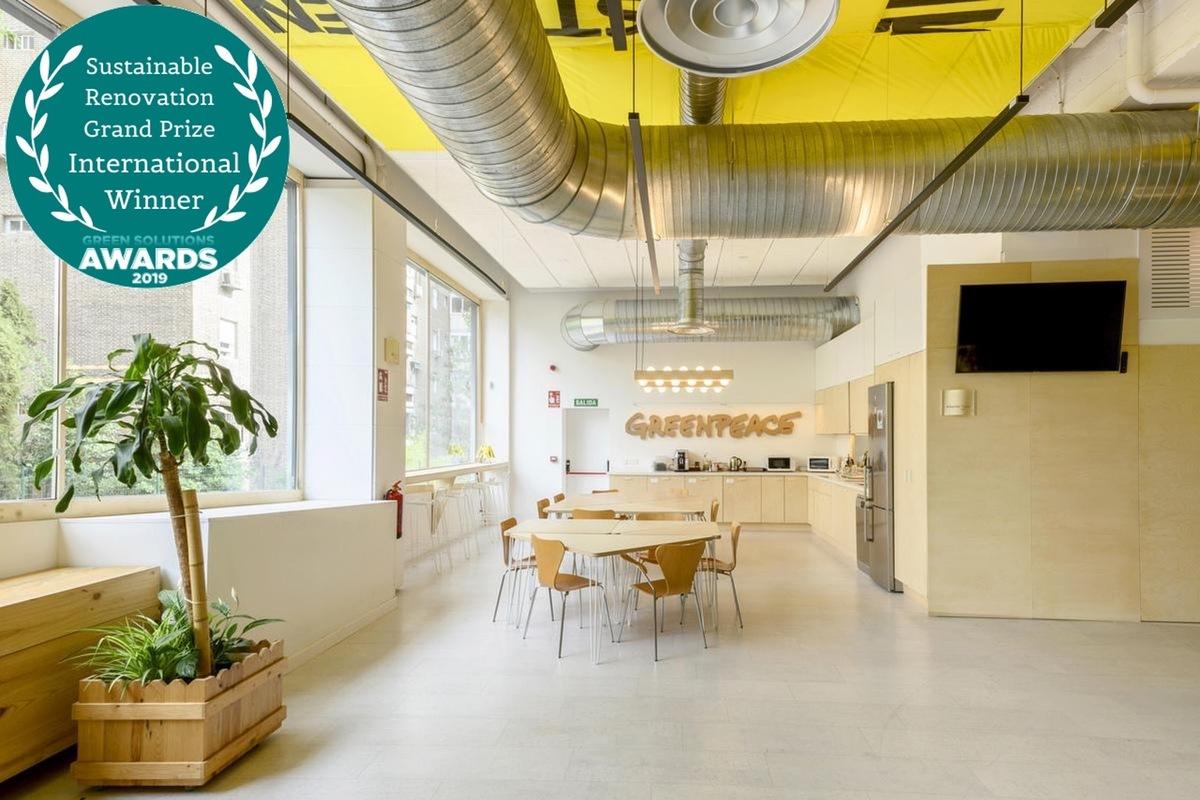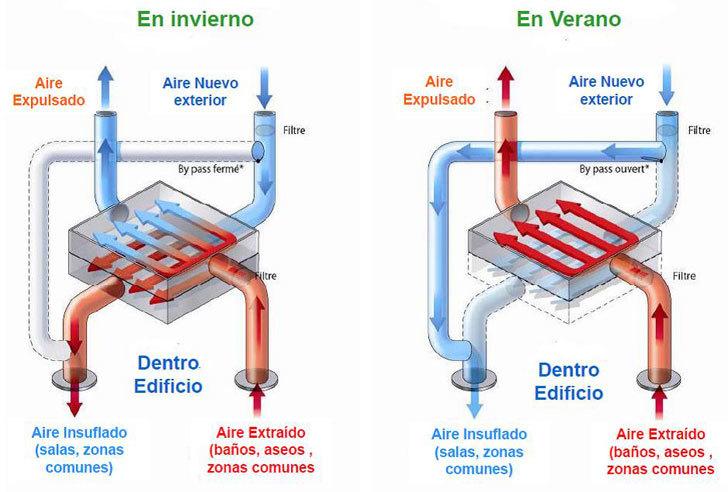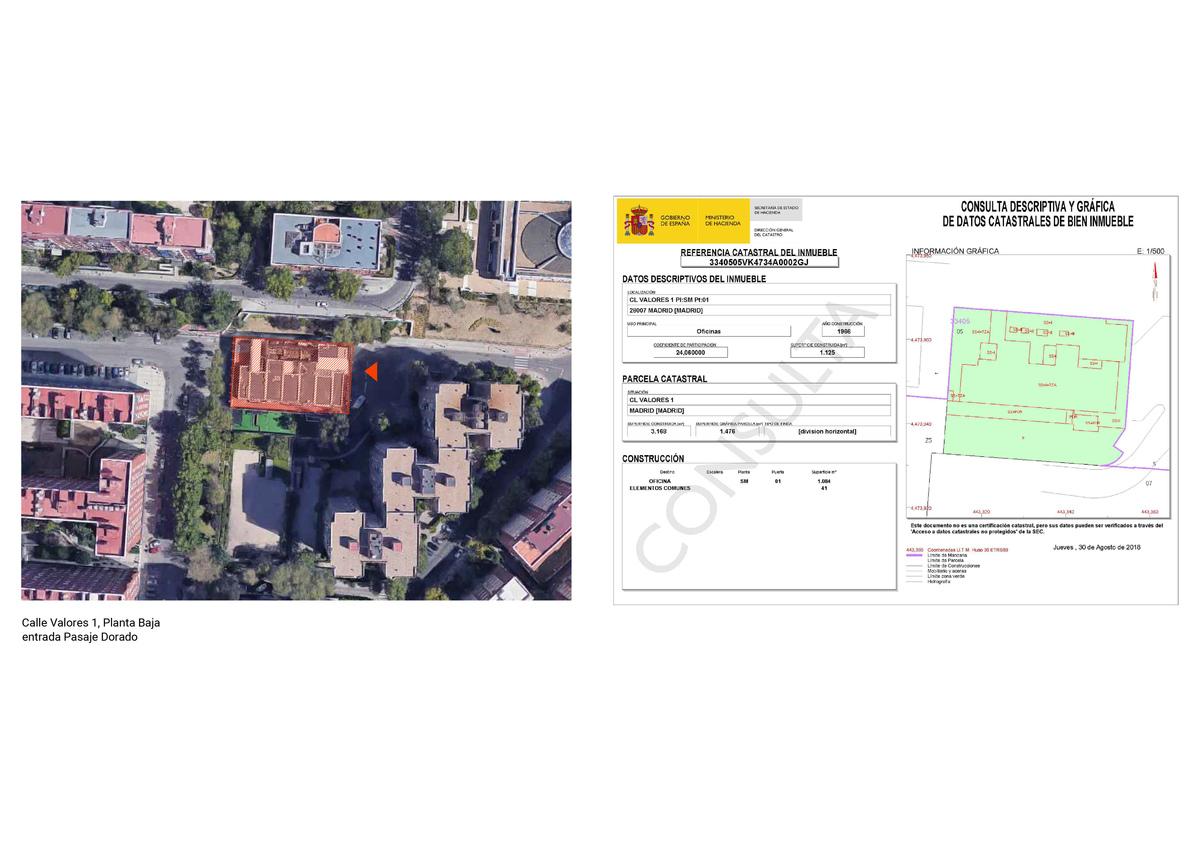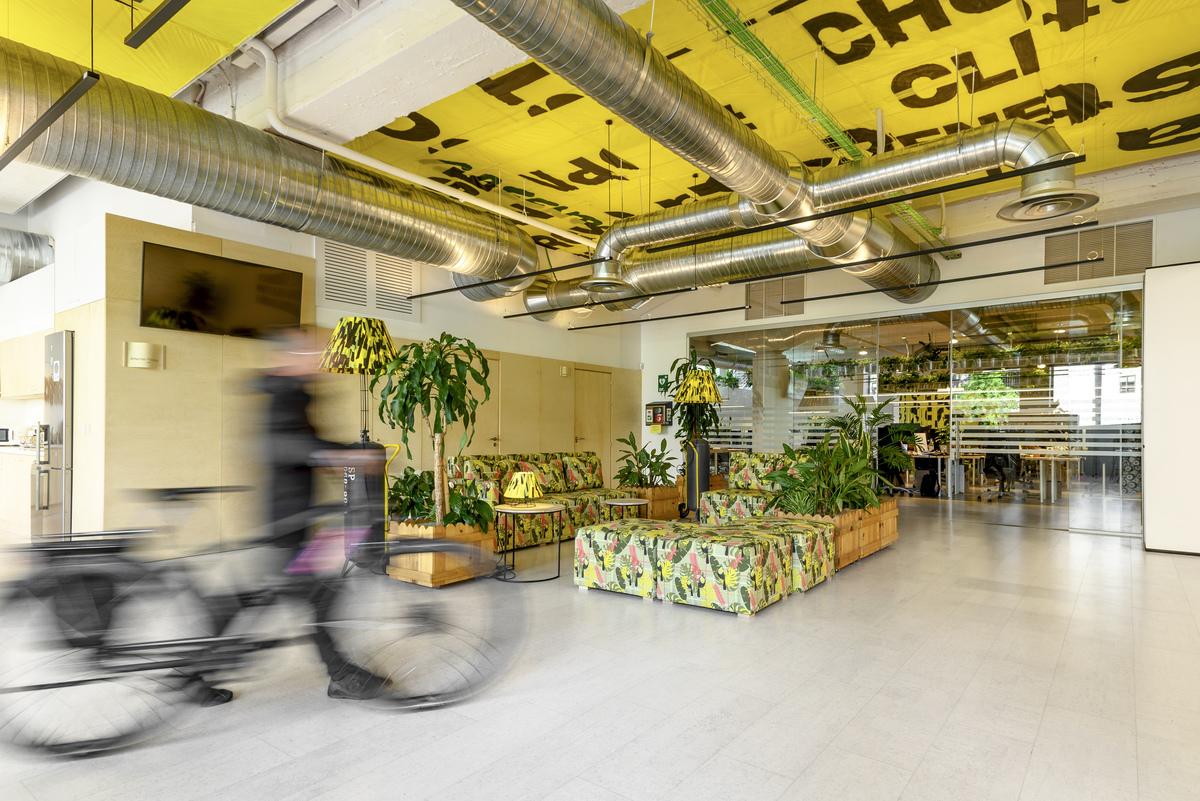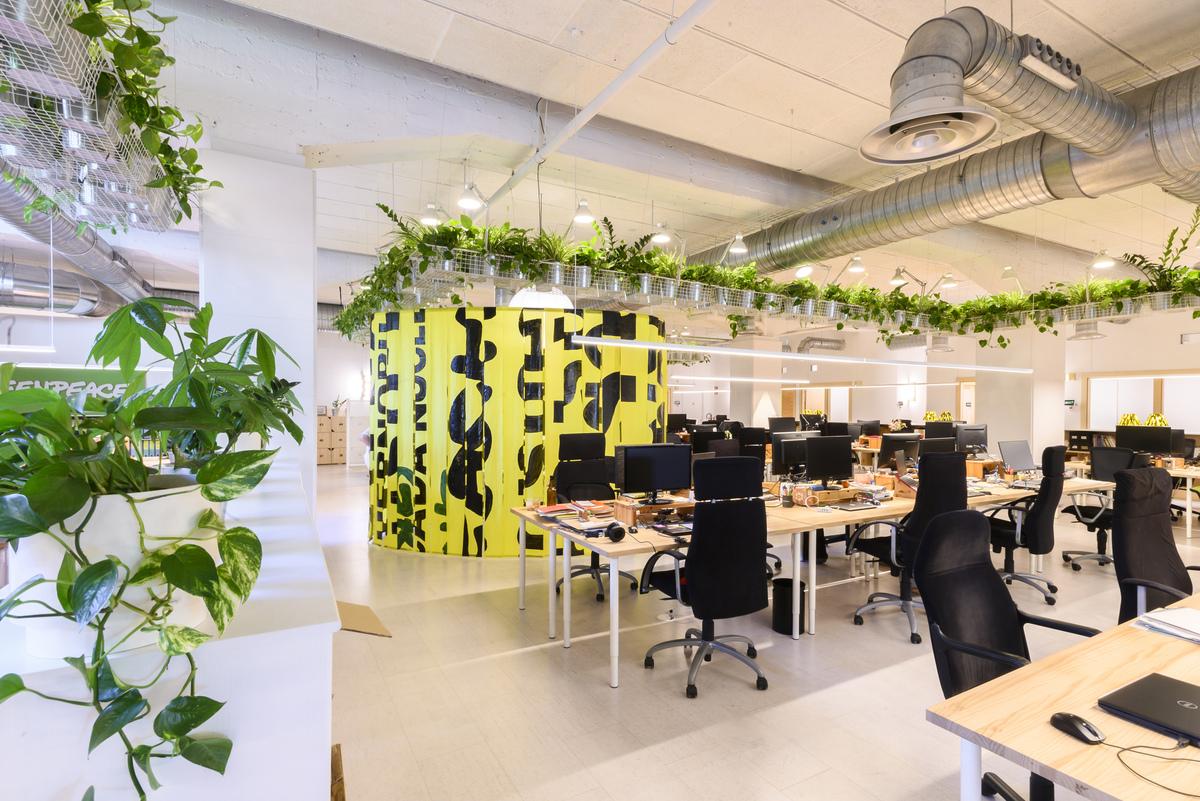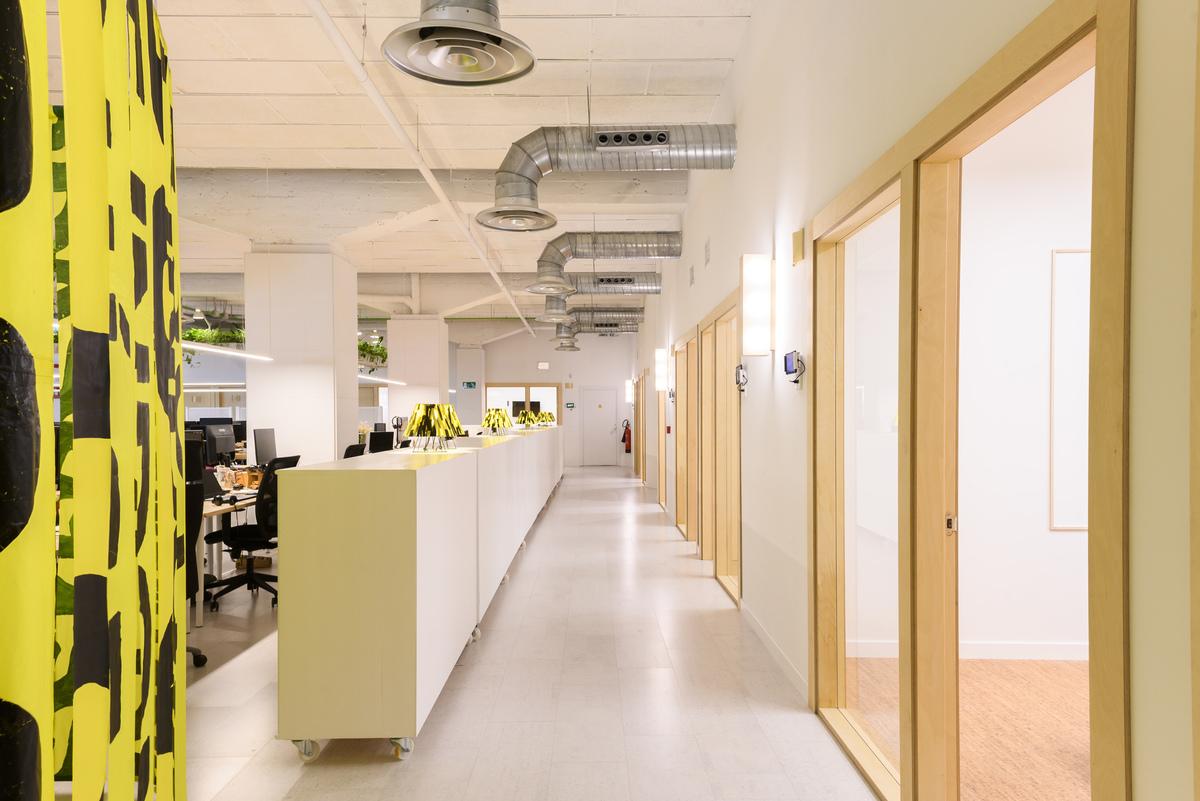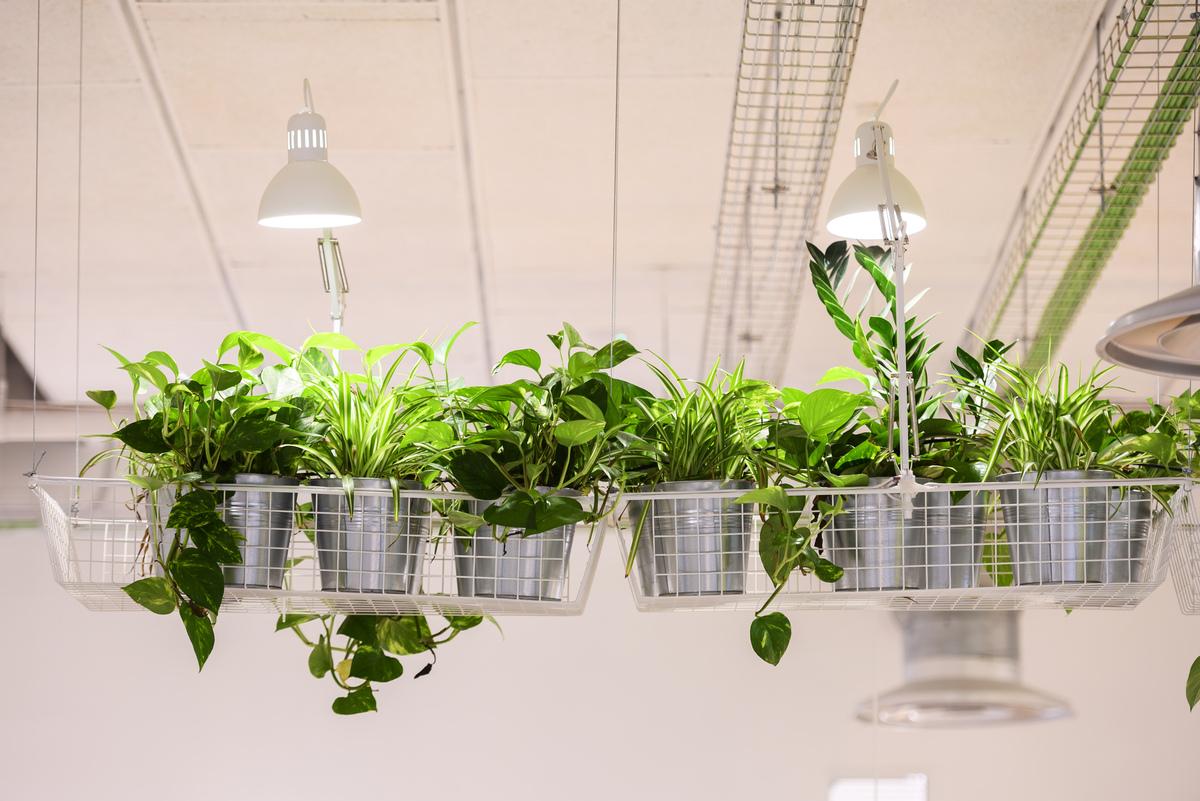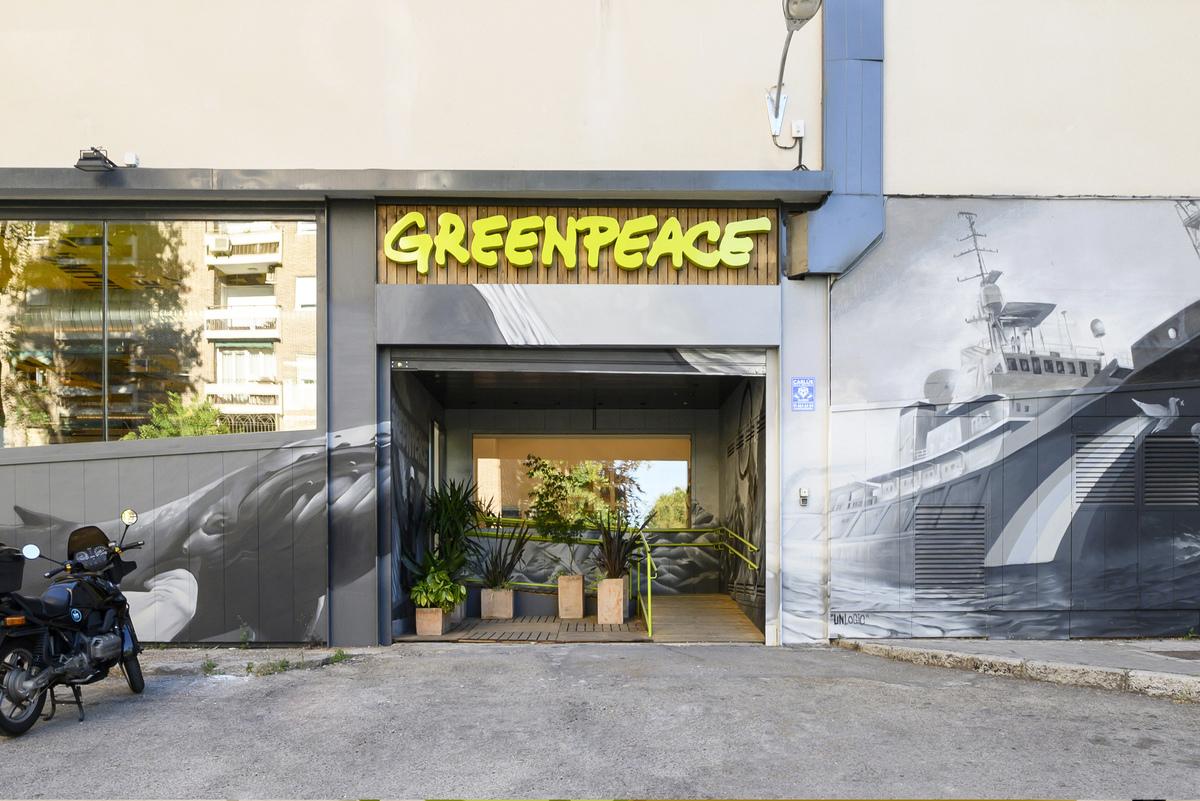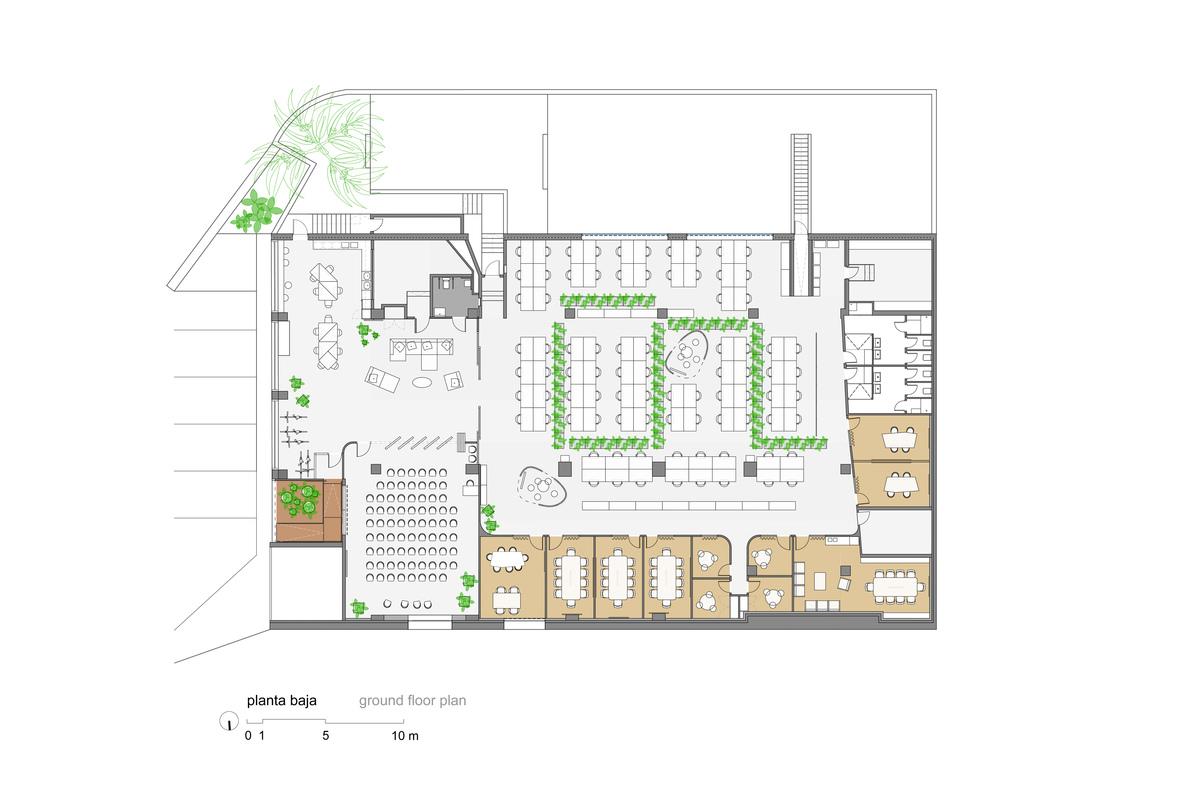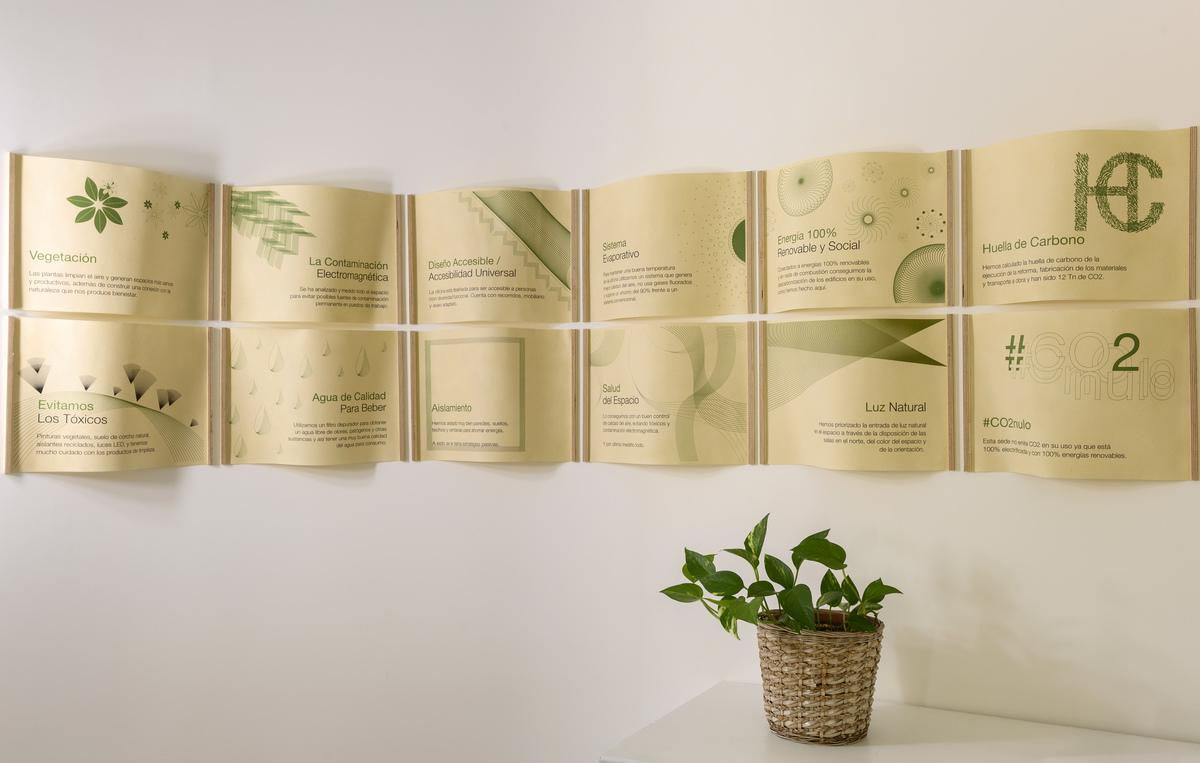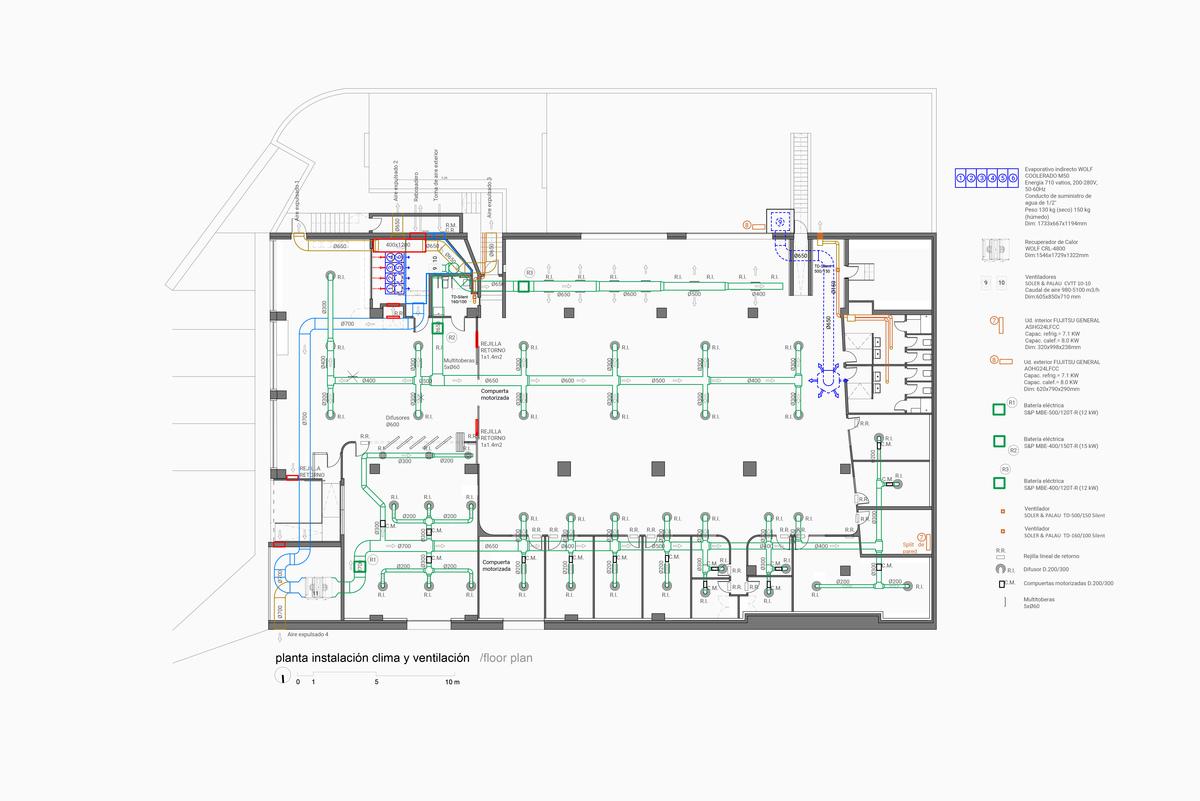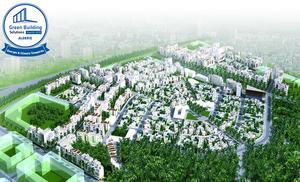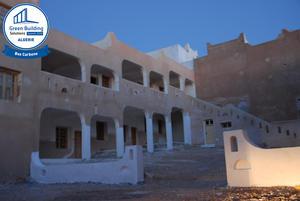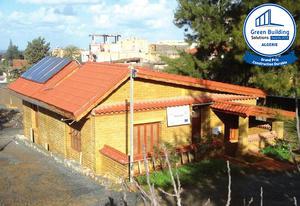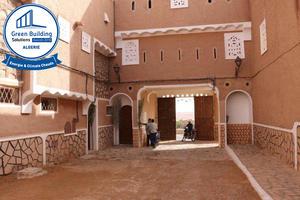Greenpeace Spain Headquarters
Last modified by the author on 07/05/2020 - 12:04
Renovation
- Building Type : Office building < 28m
- Construction Year : 2019
- Delivery year : 2019
- Address 1 - street : CALLE VALORES 1 28007 MADRID, España
- Climate zone : [Csa] Interior Mediterranean - Mild with dry, hot summer.
- Net Floor Area : 943 m2
- Construction/refurbishment cost : 542 710 €
- Number of Work station : 90 Work station
- Cost/m2 : 575.51 €/m2
-
Primary energy need
196.7 kWhpe/m2.year
(Calculation method : )
Greenpeace Spain Headquarters won the Sustainable Renovation Grand Prize of the 2019 Green Solutions Awards at the Spain level + the international Sustainable Renovation Grand Prize.
The project consists in the rehabilitation of a 1000 m2 office space to be the new headquarters of Greenpeace Spain. One of the fundamental values of Greenpeace is the action and the project seeks to represent it through a sustainable architecture, which takes care of people and the planet.
We represent the action through the banner and other elements that reflect the soul of the organization. We recycle these elements to create luminaires, curtains or the ceiling itself. The distribution of the space has been based fundamentally on the maximum use of the areas with natural lighting to house the work area and the division of the space in public zone/ action zone and private / production area.
Very demanding ecological measures have been taken such as the isolation of the entire interior envelope to improve its energy efficiency, guaranteeing a minimum energy expenditure. Low impact ecological materials have been used taking its LIFE CYCLE ANALYSIS into consideration: recycled, recyclable and organic (recycled cotton insulation, wood fibre, natural cork, plant-based paints, ecological varnishes and wood with FSC sustainable management certification, etc. ).
For cooling, an evaporative system has been designed avoiding the classic air conditioning systems that use chlorofluorinated gases with a high degree of impact on climate change. This system has an energy expenditure 80% lower than a conventional system and generates better air quality when filtered. The ventilation is mechanically controlled double flow with heat recovery. Controlled mechanical ventilation is the most effective way to combat the accumulation of biological, chemical and radioactive contaminants, and the double flow with heat recovery avoids the energy losses of traditional systems.
The lighting is led at all points of light and with a chromatic reproduction of 90% guaranteeing the best lighting quality with the lowest energy expenditure. A planter design has been used to introduce vegetation on the roof in order to generate a feeling of approach to nature and achieve an improvement in the visual and acoustic comfort of the space. We use a ceramic filter to obtain water free of odours, pathogens and other substances and thus obtain a good quality of water for consumption. The quality of the light, the materials used, and the systems of installations have been chosen taking into account the HEALTH and COMFORT of the people.
Finally, the ACV ECOMETER tool has been used to calculate the life cycle analysis of the project and we have obtained a carbon footprint impact of 124 tons of CO2 throughout the construction process, which means a very low impact (124 kg / m2), due to the low environmental cost of the chosen materials and the austerity and simplicity of the space. The 124 tn of the work has been compensated by sAtt with a compensation program in Nicaragua. As the building operates with 100% renewable energy and has no combustion element, we can affirm that it is a zero CO2 project, since it has offset its environmental cost in terms of carbon and in its use it will not emit any gram of CO2. With this, Greenpeace ensures that their office participates in an idea of decarbonising the buildings being their own headquarters consistent with their values.
See more details about this project
Certificación C02 nulo. Ecómetrohttp://acv.ecometro.org/
Data reliability
Self-declared
Photo credit
Andrés Valentín-Gamazo
Contractor
Construction Manager
Stakeholders
Designer
sAtt Triple Balance
Iñaki Alonso Echeverría / Paloma Domínguez Liñán. Calle Ferraz 56, 28008 Madrid. Tel 914094633
http://satt.es/Project Author Basic project and execution. Construction management. Work execution
Developer
GREENPEACE ESPAÑA
Julián Carranza. [email protected], Calle Valores 1, 28007 Madrid
https://es.greenpeace.org/es/Project Promoter
Thermal consultancy agency
Alter Technica Ingenieros
Jesús Soto. Tel 921462526
http://www.altertech.es/Energy consulting and design of air conditioning and ventilation installations
Construction company
3B Ingeniería y Consultoría
Benjamín Cereceda. Tel 657583249
http://www.3bic.es/Facilities consulting and design
Others
María Gil de Montes
María Gil de Montes, Lighting designer. Tel 678047676
http://mariagildemontes.com/Illumination design
Environmental consultancy
Fundación para la Salud Geoambiental
Fernando Pérez
https://www.saludgeoambiental.org/Geoenvironmental study
Contracting method
Lump-sum turnkey
Owner approach of sustainability
Mission and vision
Greenpeace is an independent organization, politically and economically, that uses nonviolent direct action to attract public attention to global environmental problems and promote the necessary solutions for a sustainable and peaceful future.
The fight against climate change and energy policy are one of the main objectives for which the organization works. Greenpeace calls for ambitious commitments in the fight against climate change: emission reduction, energy-saving measures and support to renewable energy.
In this context, Greenpeace works and researches for the development of sustainable cities. The cities, play a fundamental role in the fight against climate change and are also considered the cathedrals of consumption, but also the places where the change towards a more sustainable planet will take shape. The city is an insatiable consumer, but the scarcity of natural resources will be its fundamental limiter. To change this situation, we have to change our way of life, including consumption, mobility and construction.
Greenpeace works to achieve the progressive elimination of organochlorines, used in the manufacture of PVC plastic. The production of these compounds releases persistent, bioaccumulative and toxic substances for the environment and health. Therefore, the use of PVC-free materials in the project has been a premise.
Another of the starting premises is to propose an air conditioning system that is most respectful with the environment, free of any chlorofluorinated refrigerant. A solution based on indirect evaporative equipment (with the support of direct equipment) is proposed, which uses water evaporation to reduce the air temperature, without increasing the absolute humidity. The thermal efficiency of the evaporative systems is extraordinary since its electrical consumption is that corresponding to the fans of the equipment. It is estimated that the air conditioning of 1,000 m2 will require an installed electrical power of less than 10 kW.
Architectural description
An architecture has been developed that represents the client's values, respectful of the environment and the health of the people who are supported by these measures:
-
Energy efficiency and bioclimatic design
-
Renewable energy
-
Recycling
-
Ecological materials
-
Geoenvironmental health
-
Vegetation
-
Carbon footprint - CO2 null
Energy consumption
- 196,70 kWhpe/m2.year
- 1,00 kWhpe/m2.year
- 1,00 kWhpe/m2.year
Envelope performance
- 0,75 W.m-2.K-1
- 0,54
Systems
- Others
- Others
- Individual electric boiler
- Others
- Others
- Double flow
- Micro wind
GHG emissions
- 9,00 KgCO2/m2/year
- 124,00 KgCO2 /m2
- 30,00 year(s)
- 131,00 KgCO2 /m2
Life Cycle Analysis
- 430 556,00 kWhEP
Water management
Indoor Air quality
Comfort
-
Low-frequency alternate electric fields.
-
Low-frequency alternate magnetic fields.
-
Harmonics in the installation
-
High-frequency artificial electromagnetic radiation.
-
Continuous or electrostatic electric fields
-
Continuous magnetic or magnetostatic fields
-
Environmental radioactivity, especially radon gas.
-
The geophysical activity of the terrain: magnetic field and terrestrial radiation.
-
Artificial lighting.
-
Aldehyde levels and especially formaldehyde.
-
VOC levels (Volatile Organic Compounds).
-
The levels of particulate matter.
-
Nitrogen dioxide gas levels
-
Sulfur dioxide levels.
-
The levels of carbon dioxide.
-
Ozone levels
Product
Natural cork floor
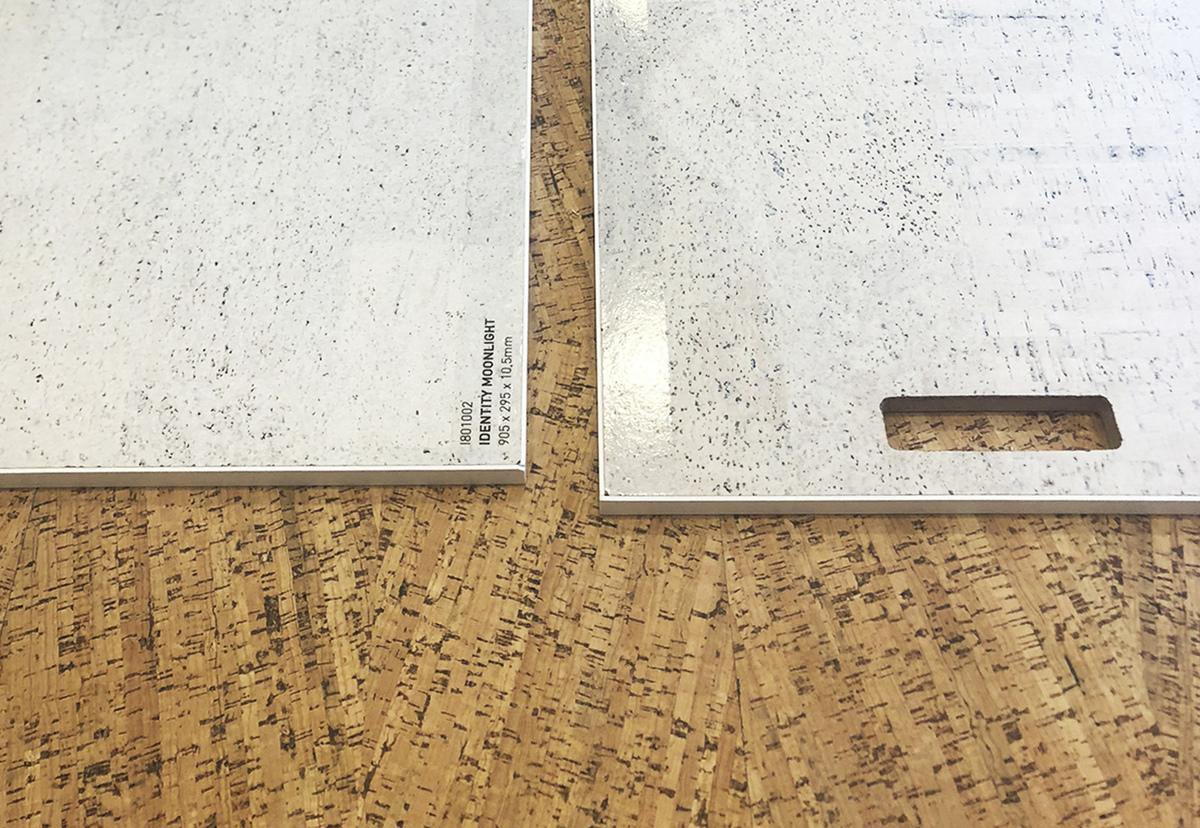
Wicanders
https://es.wicanders.com/es/
https://es.wicanders.com/es/
We replace the existing PVC flooring with another one with good environmental performance. A floating cork floor is chosen in two different touches. Cork is a completely natural material, with a transformation process with very low impact and close origin (Portugal).
All the materials used have been chosen with the objective that the impact derived from their life cycle analysis is as small as possible. Recycled, recyclable, and renewable materials predominate taking into account the traceability and proximity to the project so that the carbon footprint derived from its transportation to the worksite is as low as possible. The measurement and calculation of the carbon footprint have been made using the ECOMETER ACV tool.
Recycled cotton fiber insulation
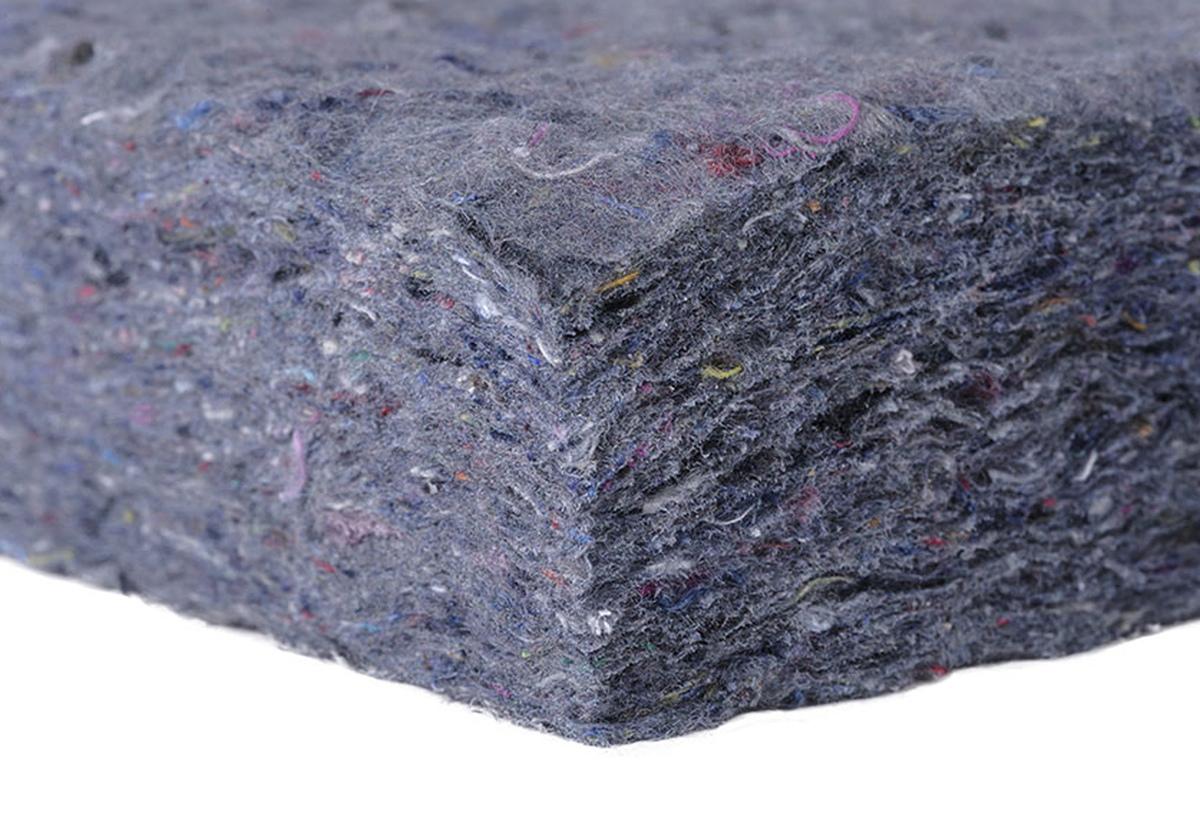
Geopannel
http://www.geopannel.com
Insulation based on regenerated textile waste, which constitutes up to 85% of the product's composition. Not only do they not only consume resources but they contribute to eliminating waste from other industrial processes to incorporate them into the architecture, promoting the circular economy.
It has a low CARBON FOOTPRINT, contributing to minimize global warming and reduce waste from the textile industry. NO TOXICITY throughout its useful life and not irritating.
Origin: Logroño (Spain)
.
Wood fiber insulation
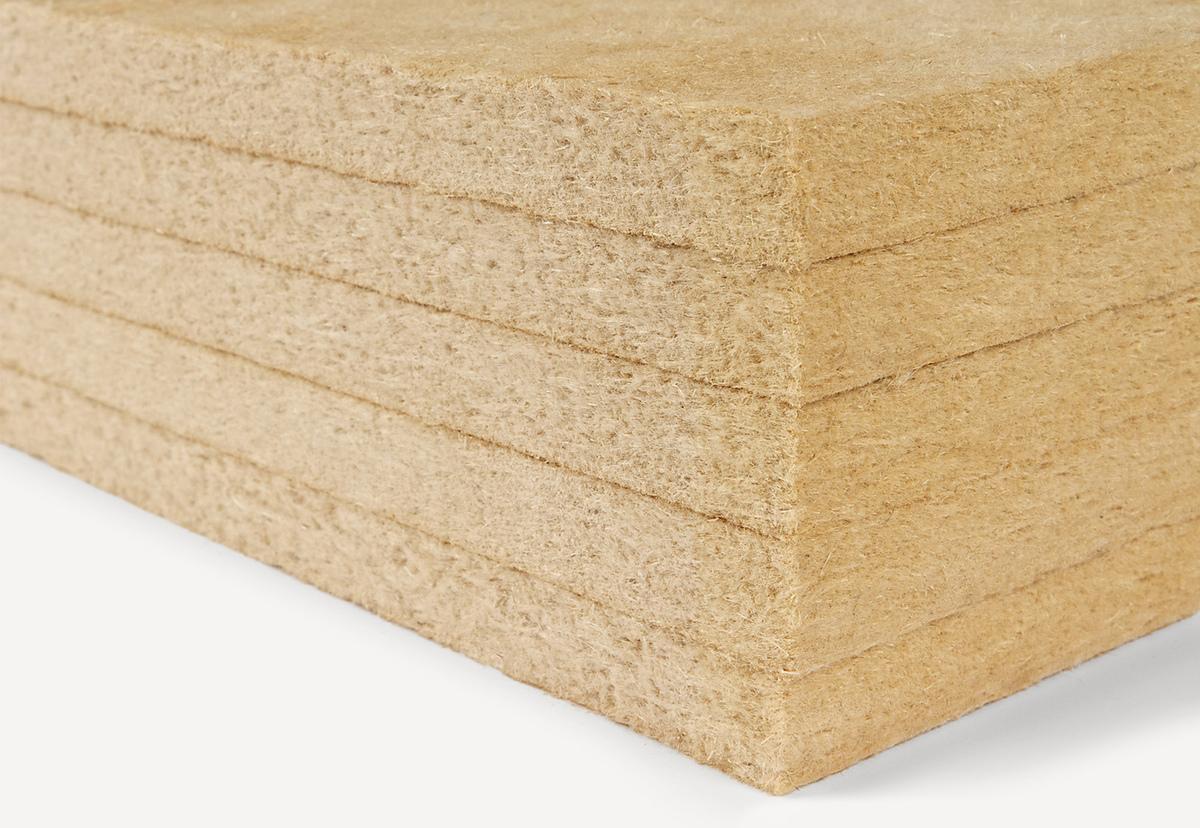
Ecospai/Pavatex
https://ecospai.com/
Fiber insulation of compacted wood. It is a biodegradable, reusable and harmless material and does not emit toxic gases. Due to the low energy required for its manufacture, and the energy it will save during its useful life, it can be considered a great ecological product that is healthy and beneficial for health. It is installed on the technical floor and works as a base for the finishing floor.
Origin: Barcelona (Spain)
.
https://ecospai.com/aislamiento/pavatherm/Plant-based paint
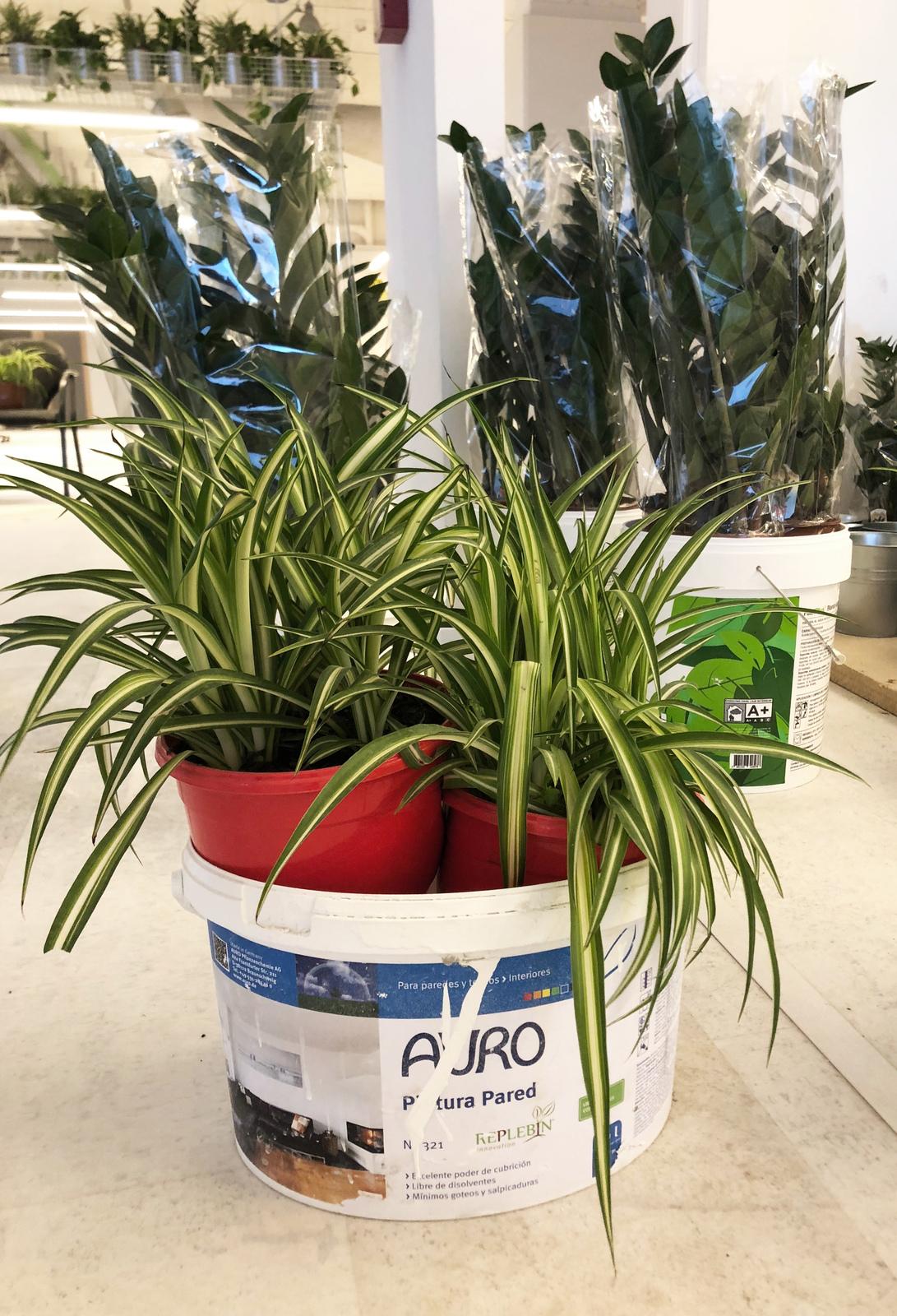
Auro
http://auropinturas.es/
Plant-based paint is an aqueous product with low emission and without solvents, obtained naturally from organic and mineral products. It is a 100% natural product that has no petroleum-derived compound. It is applied to walls and ceilings and the boats are recycled as plant pots. Origin: Barcelona (Spain) / Germany
.
Construction and exploitation costs
- 542 710 €
Urban environment
The office is located in C / Valores nº1 (Madrid) with main access through Pasaje Dorado 6. It is located in a residential area belonging to the Retiro district, next to the C / Doctor Esquerdo and the Parque de Roma. The place has an outdoor garden/terrace.
The place has an outdoor and indoor bike parking that promote sustainable mobility alternatives, both for the organization and for the neighbourhood.
Land plot area
1 304,00 m2
Built-up area
1 004,00 %
Green space
300,00
Building Environmental Quality
- Building flexibility
- indoor air quality and health
- biodiversity
- comfort (visual, olfactive, thermal)
- energy efficiency
- products and materials
Reasons for participating in the competition(s)
100% RENEWABLE ENERGY
The office uses 100% renewable energy of own origin through a windmill installed in Catalonia. In this way, we achieve the decarbonization of the premises in its usage phase and promote the shift of the energy model.
NULL CO2
We have calculated the carbon footprint of the process of execution, manufacture of the materials and transport to work with the tool ECOMETER ACV, with a result of 124 tons of CO2. During its use, these headquarters do not emit CO2 since it is 100% electrified and with 100% renewable energy. sAtt has offset the Carbon Footprint (124Tn) in construction with an ECODES reforestation program in Nicaragua.
ENERGY EFFICIENCY AND PASSIVE MEASURES
The energy strategy is to minimize demand through passive measures. For this purpose, the enclosure (walls, floors and ceilings) has been isolated, high-performance glass and solar control elements have been installed. In this way we manage to save energy and reduce the impact.
FLUORATED GAS FREE COOLING SYSTEM
To maintain a good temperature in the office we use a direct and indirect evaporative system that does not use fluorinated gases, generates better air quality and saves 80% compared to a conventional heat pump system.
ECOLOGICAL MATERIALS
Low impact materials in its Life Cycle Analysis: recycled, recyclable, and renewable. Cork for floors, wood chips and recycled textiles for insulation, FSC wood for furniture, vegetable paints. We avoid materials with formaldehyde and, of course, no PVC.
SPACE HEALTH AND GEO-ENVIRONMENTAL ANALYSIS
The health of people depends on a series of perfectly measurable geophysical alterations. We analyze waves, particles, gases, electric fields, light, shapes, colours and vegetation to propose measures and generate the best relationship between people and space.
NATURAL LIGHT AND LED LIGHTING
We have prioritized the entry of natural light into space through the layout of the rooms in the north, the colour of the space and the orientation. The work light has a colour rendering index of 90% for better visual comfort.
VEGETATION
Plants clean the air and generate healthier and more productive spaces, in addition to building a connection with nature that produces well-being.
ACCESSIBLE DESIGN
The office is designed to be accessible to people with functional diversity. It has tours, furniture and adapted toilets.
Building candidate in the category

Energía & Climas Cálidos

Bajo Carbono

Salud & Comodidad





